Top 5 articles regarding technology in 2010
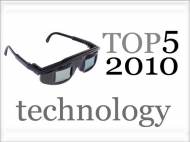 As we mentioned in our article about top 5 gadgets in 2010, last year was a lot about 3D display technology. Aside various breakthroughs in solar power harvesting efficiency, there were breakthroughs in production and design of solar panels. We reported how first synthetic life was created, and there have been many breakthroughs in the field of nanotechnology, as well as in the material sciences.
As we mentioned in our article about top 5 gadgets in 2010, last year was a lot about 3D display technology. Aside various breakthroughs in solar power harvesting efficiency, there were breakthroughs in production and design of solar panels. We reported how first synthetic life was created, and there have been many breakthroughs in the field of nanotechnology, as well as in the material sciences.
These are the top 5 articles regarding technology (according to our visitors):
5. Nanosys nanotechnology improves ordinary LED lighting
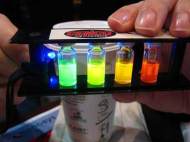 Their technology is able to make the colors of LED displays more colorful and attractive. The process-ready technology can be used by electronics and lighting companies on their current LED manufacturing lines. It is manageable because already used blue LED lights can be covered with a coating of nanomaterials, thus forming better quality white LED light with a range of hues.
Their technology is able to make the colors of LED displays more colorful and attractive. The process-ready technology can be used by electronics and lighting companies on their current LED manufacturing lines. It is manageable because already used blue LED lights can be covered with a coating of nanomaterials, thus forming better quality white LED light with a range of hues.
Nanosys Quantum Dot Remote Phosphors contain quantum dots capable to turns the blue light into a “warm” white light that resembles the kind of light that comes out of a regular incandescent bulb. The company simply uses standard blue LEDs, and adds their phosphor material made from nanomaterials to create warm white LED lights.
4. Kyosemi Sphelar – spherical micro solar cell
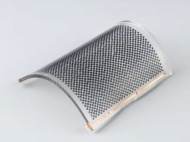 Unlike traditional solar panels, Kyosemi Sphelar cells are solidified silicon drops measuring 1.8 mm in diameter and are highly transparent. They can be embedded in glass to create a transparent solar cell window, capable of absorbing light from any direction or angle. Because both sides of the glass can collect light, this approach should be able to perform more efficient energy harvesting.
Unlike traditional solar panels, Kyosemi Sphelar cells are solidified silicon drops measuring 1.8 mm in diameter and are highly transparent. They can be embedded in glass to create a transparent solar cell window, capable of absorbing light from any direction or angle. Because both sides of the glass can collect light, this approach should be able to perform more efficient energy harvesting.
They can be connected either in parallel or in series. This enables diverse spherical products to be created, such as dome-shaped solar cells and “flexible” solar cells aligned on soft film substrates. Sphelar is perfect for situations where the installation of a flat solar cell would block the field of view. It is also possible to create “power-generating window glass” while maintaining a certain level of transparency, ranging from 20 to 80%. The cells can also be embedded in flexible surfaces, allowing for them to take on unusual shapes or be bent if necessary.
3. Super-fast book scanner digitizes a book within minutes
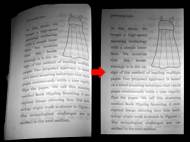 Professor Masatoshi Ishikawa from the University of Tokyo, and his lab members Takashi Nakashima and Yoshihiro Watanabe, created a super-fast book scanner. The system lets you scan a book by rapidly flipping its pages in front of a high-speed camera. They call this method book flipping scanning. The scanned pages are curved and distorted, but the researchers found a way to fix that.
Professor Masatoshi Ishikawa from the University of Tokyo, and his lab members Takashi Nakashima and Yoshihiro Watanabe, created a super-fast book scanner. The system lets you scan a book by rapidly flipping its pages in front of a high-speed camera. They call this method book flipping scanning. The scanned pages are curved and distorted, but the researchers found a way to fix that.
The camera operates at 500 frames per second, with a resolution of 1280 by 1024 pixels. For each frame, the system alternates between two capture modes. First it shines regular light on the page and captures text and images. Then a laser device projects lines on the page and the camera captures that as well. They claim their scanner can digitize a 200-page book in one minute, and hope to make that even faster.
2. Photon Enhanced Thermionic Emission process boosts efficiency of solar panels
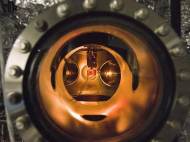 Stanford engineers have found out how to simultaneously use the light and heat of the sun to generate electricity in a way that could make solar power production more than twice as efficient as existing methods and potentially cheap enough to compete with oil. Unlike photovoltaic technology currently used in solar panels (which become less efficient as the temperature rises) the new process excels at higher temperatures.
Stanford engineers have found out how to simultaneously use the light and heat of the sun to generate electricity in a way that could make solar power production more than twice as efficient as existing methods and potentially cheap enough to compete with oil. Unlike photovoltaic technology currently used in solar panels (which become less efficient as the temperature rises) the new process excels at higher temperatures.
Called Photon Enhanced Thermionic Emission (PETE), the process promises to surpass the efficiency of existing photovoltaic and thermal conversion technologies. Most photovoltaic cells, such as those used in rooftop solar panels, use the semiconducting material silicon to convert the energy from photons of light to electricity. But the cells can only use a portion of the light spectrum, with the rest just generating heat.
1. Walk over Sustainable Dance Club floor tiles to generate power
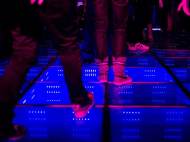 We wrote about several efforts to introduce piezoelectric power generating technology, where the energy provided by pedestrians gets converted into electricity in order to run street lights. A trial section of eight modules already was installed in the city of Toulouse, France, in order to produce 50-60 watts – enough to power a street lamp. The pavement modules were developed by a Dutch company, Sustainable Dance Club (SDC).
We wrote about several efforts to introduce piezoelectric power generating technology, where the energy provided by pedestrians gets converted into electricity in order to run street lights. A trial section of eight modules already was installed in the city of Toulouse, France, in order to produce 50-60 watts – enough to power a street lamp. The pavement modules were developed by a Dutch company, Sustainable Dance Club (SDC).
Their first installation was at a dance club, “Club Watt” in Rotterdam, and it supplies illuminated dance floors lit by the energy of the dancers. The modules have embedded microsensors that generate electricity through the piezo effect when squeezed by pressure exerted on them by dancers on the floor above (or in the Toulouse case, pedestrians on the pavement above).









Cool site found you on digital point.
author
Thanks, appreciate it.
Lovely site. Liked it :)
Internet Application Services